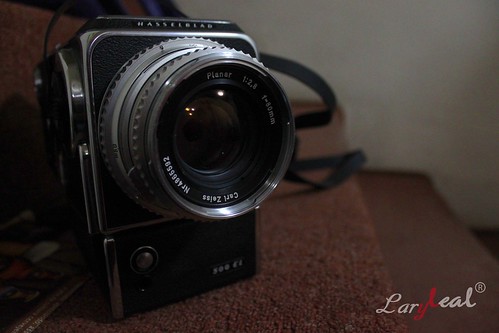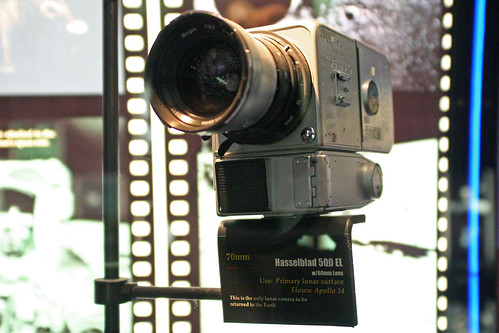Difference between revisions of "Hasselblad 500 EL"
(another link) |
(added 503el photo) |
||
| Line 1: | Line 1: | ||
{{stub}} | {{stub}} | ||
| + | |||
| + | {{Flickr_image | ||
| + | |image_source= http://www.flickr.com/photos/laryleal/5720467033/in/pool-camerawiki/ | ||
| + | |image= http://farm3.staticflickr.com/2571/5720467033_aee94f88df.jpg | ||
| + | |image_align= right | ||
| + | |image_text= Hasselblad 500 EL | ||
| + | |image_by= Lary Leal | ||
| + | |image_rights= wp | ||
| + | }} | ||
| + | |||
The '''500 EL''' was introduced by [[Hasselblad]] in 1965—essentially a [[Hasselblad 500 C|500 C]] with a permanently-integrated motor drive in the baseplate of the camera. Because the 500 C lacks an instant-return mirror, this automated winding was a helpful feature in quick-moving shooting situations. | The '''500 EL''' was introduced by [[Hasselblad]] in 1965—essentially a [[Hasselblad 500 C|500 C]] with a permanently-integrated motor drive in the baseplate of the camera. Because the 500 C lacks an instant-return mirror, this automated winding was a helpful feature in quick-moving shooting situations. | ||
Revision as of 14:19, 5 August 2012
This article is a stub. You can help Camera-wiki.org by expanding it.

|
| Hasselblad 500 EL image by Lary Leal (Image rights) |
The 500 EL was introduced by Hasselblad in 1965—essentially a 500 C with a permanently-integrated motor drive in the baseplate of the camera. Because the 500 C lacks an instant-return mirror, this automated winding was a helpful feature in quick-moving shooting situations.
The 500 EL was famously adapted by NASA for the Apollo moon program (although the moonwalk cameras omitted the reflex viewing of the stock model). A number of 500 EL's remain abandoned on the lunar surface.
The EL was succeeded in 1971 by the 500 EL/M.
Links
- Hasselblad 500 EL profiled at Karen Nakamura's Photoethnography.com
- Hasselblad 500 EL manual at Mike Butkus' OrphanCameras.com
- Hasselblad Space Cameras at Hasselblad.com

|
| Modified 500 EL used on Apollo 14 moonwalk image by GregF422 (Image rights) |